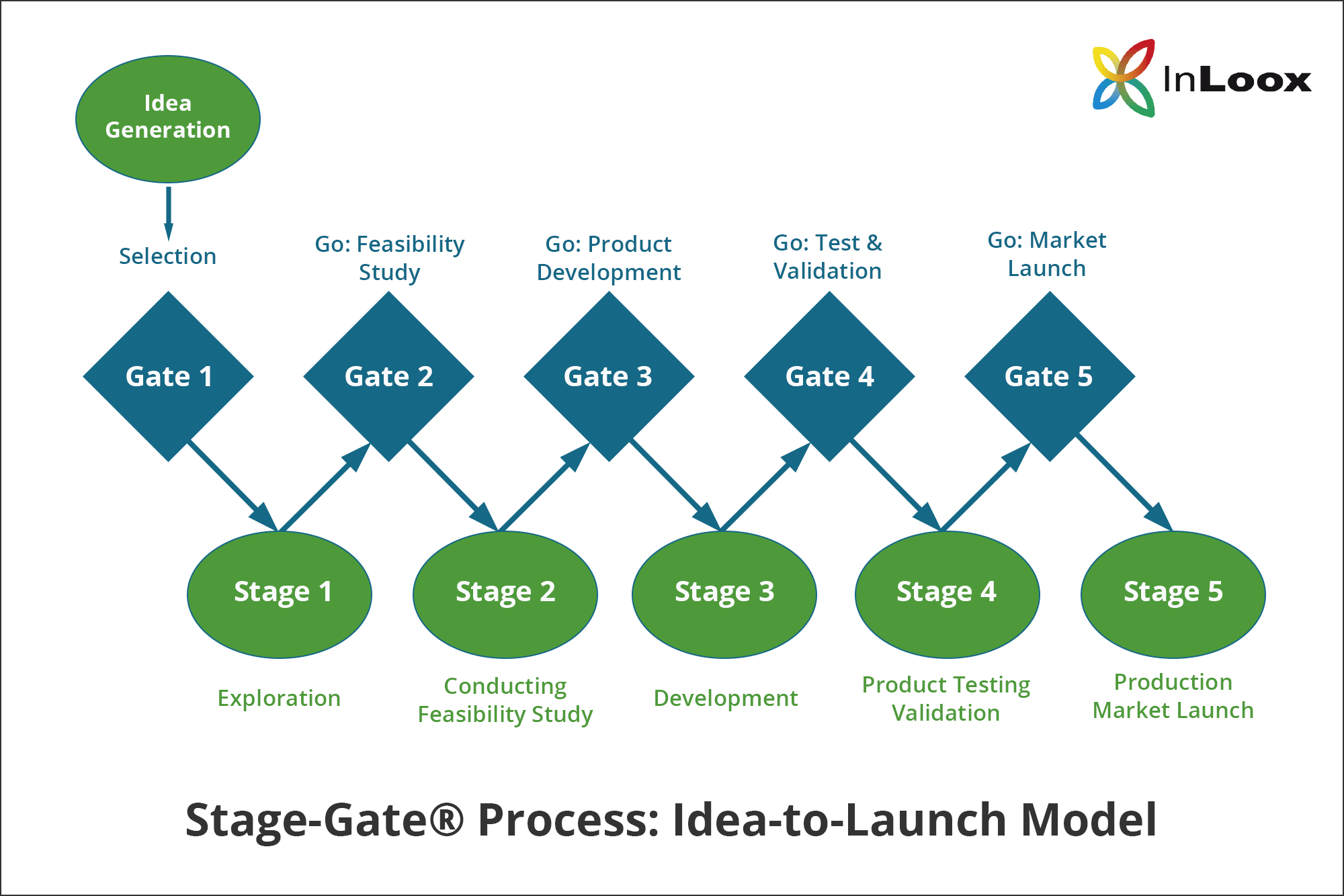In the third article of our blog series on innovation management with the Stage-Gate® process, we take a step further towards application. Here you will learn how the process model is structured in principle and how the idea-to-launch model can be used to accompany projects through to market launch.
Product Development with the Stage-Gate® Process (Part 3): Procedure and Structure
Kathrin Jungwirth, Monday 07 March 2022 | Reading time: 10 min.In the last parts of our blog series on innovation management with the Stage-Gate® process, we looked at the basics such as the definition, strengths and weaknesses, and the basic principles. In this article - the third part - we dive even deeper and look at the basic structure as well as exemplary the idea-to-launch model, which structures and accompanies projects from the idea to the market launch.
Content
1. Procedure Stage-Gate® process
Basically, the Stage-Gate® model consists of a sequence of work stages and checkpoints - similar to a simple phase-milestone model. The sections are called stages and the control points are called gates.
Stages
Within the work stages, predefined tasks are performed. As far as possible, the tasks are performed in parallel to guarantee fast progress. Each work stage implies increasing costs and aims at collecting and generating more information to progressively reduce uncertainties. At the end of each stage, all work results are compiled by the project team, jointly analyzed, and prepared for the subsequent review.
Gates
At the end of each stage there is a gate, where the work results are reviewed and checked by a panel, the so-called gatekeepers. The goal is to clarify to what extent the uncertainty regarding the development project could be reduced throughout the project. For this purpose, a predefined criteria catalog is consulted. The criteria catalog consists of technical as well as economic points and includes the strategic orientation of the product and the company.
Different types of criteria are used:
- Hard factors, which must be fulfilled.
- Soft factors, which should be fulfilled.
Whether the current development status meets these criteria thus requires exchange and discussion among the gatekeepers. After the quality control has been carried out based on the criteria catalog, the committee decides at each gate whether to continue or stop the project.
Different types of decisions are possible:
- Go: Continuation of the project à The necessary resources must be made available.
- Kill: The project does not meet the criteria à Discontinuation of the project
- Hold: Stopping the project à A reassessment is made later
- Rework: Tasks have been insufficiently completed à Revision of relevant tasks
In this way, the project successively passes through different work phases, each followed by a gate for review and decision.
2. Example: Idea-to-launch model
The basic principles of the Stage-Gate® process can be applied to a wide variety of projects. In the following, we will go into more detail about the idea-to-launch model, which is suitable for product development projects (new development, further development, modification, etc.) and is now considered the industry standard for product innovations.
The idea-to-launch model is based on the assumption that every innovation starts with an idea and ends with a successful market launch. This process can be very complex and chaotic, which is why it helps to divide the process into comprehensible sub-steps with the help of the model. In this way, all pre-development activities (e.g. feasibility studies), development activities as well as preparation and execution of the market launch can be mapped and structured with the help of a complete process.
Structure of the idea-to-launch model
The idea-to-launch model is structured by default on the basis of 5 stages with an upstream phase for idea generation as well as 5 gates (Edgett, S. J. | 2018 | p. 3 ff.):
Figure: Structure of the Stage-Gate® process based on the idea-to-launch model (source: own illustration, based on Cooper, R. G. | 1993)
| Stage | Gate | Description |
| Idea generation | Phase in which preliminary work is done to generate new ideas and approaches. | |
| Gate 1: Selection | ||
| Stage 1: Exploration | Initial investigations are carried out into the underlying conditions surrounding the project idea. | |
| Gate 2: Go for feasibility study | ||
| Stage 2: Feasibility study | Conducting detailed analyses and elaboration of product and project definition, arguments for the project as well as a first project plan. | |
| Gate 3: Go for product development | ||
| Stage 3: Development | Execution of the necessary design and development activities for the product as well as, if necessary, the basics for the production process for serial production. | |
| Gate 4: Go for test and validation | ||
| Stage 4: Product testing and validation | Final testing in the laboratory, in production and in the market to validate the product and the production plans. | |
| Gate 5: Go for market launch | ||
| Stage 5: Production and market launch | Start of production and, if necessary, series production as well as the necessary marketing and sales activities for a successful market launch. |
More about the Stage-Gate® process
- Part 1: Product Development with the Stage-Gate® Process: Definition and Basic Principles
- Part 2: Product Development with the Stage-Gate® Process: Strengths, Weaknesses, Pitfalls
Literature:
Cooper, R. G. (1993): Winning at new products. Accelerating the process from idea to launch. Addison-Weseley.
Edgett, S. J. (2018): Idea-to-Launch (Stage-Gate®) Modell: ein Überblick. URL: https://www.stage-gate.com/wp-content/uploads/2018/06/wp10german.pdf (last access: 02-15-2022)
"Stage-Gate® is a registered trademark of Robert G. Cooper, Product Development Insitute Inc. and Jens Arleth, Innovation Management U3. Further information can be found here: www.stage-gate.com.
"

